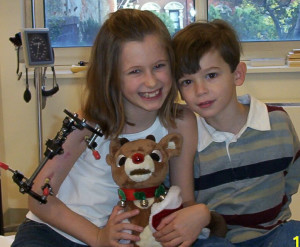Who is it for?
Limb length discrepancy (LLD) can affect both children and adults and is found in the lower and upper limbs. The lower extremity is most affected and this is called leg length discrepancy. One short leg creates imbalance and stress on the lowernback and hip causing pain and joint degeneration. Causes of LLD are congenital (from birth such as fibular hemimelia, hemiatrophy, hemihypertrophy, congenital short femur), after trauma or after infection. Trauma or infection can damage the growth plate in children leading to LLD and deformity. Fractures can heal in an abnormal position with shortening and deformity (malunion). Bone tumors (Ollier’s, Fibrous Dysplasia) can lead to shortening and deformation of the bone. Limb shortening whether it is due to trauma or for congenital reasons is often associated with deformity.
Limb length discrepancy in the upper extremity can lead to back and shoulder pain related to asymmetry.
How does limb lengthening surgery work?
Osteogenesis is bone’s ability to regenerate more bone after a fracture or after it is surgically cut (osteotomy). We take advantage of this ability to regenerate by performing an osteotomy (bone cut) and slowly pulling apart the bone (distraction) so new, healthy bone will form. With a controlled rate and rhythm of distraction, new bone fills in the gradually enlarging gap created. Bone is usually lengthened at a rate of about 1 mm per day. The lengthening phase of treatment (distraction) is followed by mineralization and hardening (consolidation) of the new bone. Soft tissues including skin, muscles, nerves and blood vessels will stretch and grow during this process.
What are the possible techniques for this?
The gradual process of lengthening can be accomplished with either an external fixator or an internal lengthening nail.
External fixation is a frame built on the outside of the limb connected to the bone via pins and wires. Adjustments of the external fixator can be used to gradually lengthen and straighten the short or mal-aligned limb.
The internal lengthening nail (ILN) has become the most common and preferred method for bone lengthening. ILN is a telescopic motorized intramedullary nail or rod that is inserted into the marrow cavity of the bone. With a remote control device, the magnet in the nail is rotated which gradually elongates the telescopic nail and the bone. With this method, the bone is straightened at the time of surgery when the ILN is inserted, and the lengthening is then done gradually over the next several weeks.
 What is the best method?
What is the best method?
When possible, we prefer to use the internal lengthening nail. However, there are many situations that require use of the external fixator:
- Children with open growth plates
- Small bones of the foot, hand, and arm
- Large deformities that cannot be straightened acutely
How is recovery?
During the lengthening phase, patients are mobile, walking with crutches. Exercises to maintain joint mobility and muscle strength are done daily. The process gets a lot easier once the bone is out to length. Gradual increase in weight bearing is done and most people are walking without crutches after about two to three months. The exact duration depends on the amount of lengthening needed.
Bone healing is a function of age, and we do see faster bone healing in children than adults. Nevertheless, we have been able to successfully lengthen limbs in adults even in their 60’s.





